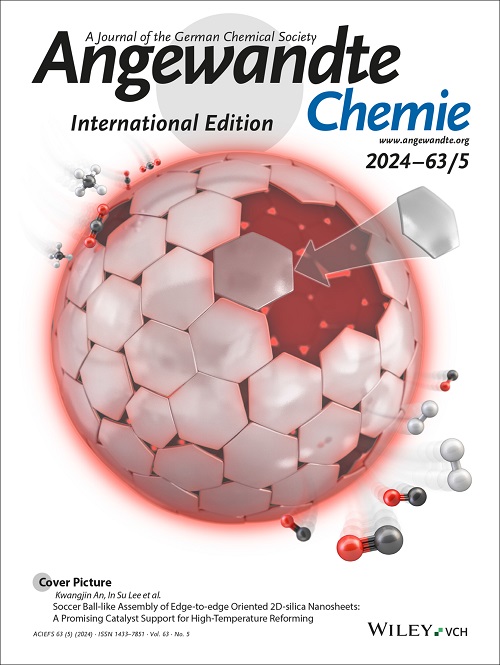Conformationally Locked Peptide-DNA Nanostructures for CRISPR-Amplified Activity-Based Sensing
IF 16.1
1区 化学
Q1 CHEMISTRY, MULTIDISCIPLINARY
引用次数: 0
Abstract
We introduce a new class of chemical probes for activity-based sensing of proteases, termed Cleavable, Locked Initiator Probes (CLIPs). CLIPs contain a protease-cleavable peptide linked between two programmable DNA strands – an “initiator” DNA and a shorter “blocking” DNA. These DNA sequences are designed to hybridize, creating a “locked” hairpin-like structure. Upon proteolytic cleavage, the initiator strand is released, triggering the activation of CRISPR-Cas12a enzymes and producing an amplified fluorescence response. CLIPs generate more than 20-fold turn-on signals at room temperature (25°C), significantly outperforming commercial probes by yielding ~40-fold lower limits of detection (LOD) at 100-fold lower concentrations. Their versatility enables the detection of various disease-relevant proteases – including the SARS-CoV-2 main protease, caspase-3, matrix metalloproteinase-7, and cathepsin B – simply by altering the peptide sequence. Importantly, CLIPs detect cathepsin B in four different colorectal cancer cell lines, highlighting their clinical potential. Taken together, the sensitivity (LOD: ~88 pM), selectivity, and rapid assay time (down to 35 minutes), combined with the ability to operate in complex biological media with minimal sample preparation, position CLIPs as powerful chemical tools for activity-based sensing of functional enzymes.我们介绍了一类新的化学探针,用于对蛋白酶进行基于活性的传感,这种探针被称为可裂解锁定启动子探针(CLIPs)。CLIPs 含有一种蛋白酶可裂解肽,连接在两条可编程 DNA 链(一条 "启动子 "DNA 链和一条较短的 "阻断 "DNA 链)之间。这些 DNA 序列旨在杂交,形成 "锁定 "的发夹状结构。蛋白水解裂解后,启动子链被释放,触发 CRISPR-Cas12a 酶的激活,产生放大的荧光反应。CLIP 在室温(25°C)下可产生 20 倍以上的开启信号,在浓度低 100 倍的情况下,检测限(LOD)可低约 40 倍,大大优于商业探针。CLIPs 用途广泛,只需改变肽序列,就能检测各种疾病相关蛋白酶,包括 SARS-CoV-2 主要蛋白酶、caspase-3、基质金属蛋白酶-7 和 cathepsin B。重要的是,CLIPs 能在四种不同的结直肠癌细胞系中检测出猫蛋白酶 B,这凸显了它的临床潜力。总之,CLIPs 的灵敏度(LOD:~88 pM)、选择性和快速检测时间(最短 35 分钟),以及在复杂的生物介质中以最少的样品制备就能操作的能力,使其成为基于活性的功能酶检测的强大化学工具。
本文章由计算机程序翻译,如有差异,请以英文原文为准。
求助全文
约1分钟内获得全文
求助全文
来源期刊
CiteScore
26.60
自引率
6.60%
发文量
3549
审稿时长
1.5 months
期刊介绍:
Angewandte Chemie, a journal of the German Chemical Society (GDCh), maintains a leading position among scholarly journals in general chemistry with an impressive Impact Factor of 16.6 (2022 Journal Citation Reports, Clarivate, 2023). Published weekly in a reader-friendly format, it features new articles almost every day. Established in 1887, Angewandte Chemie is a prominent chemistry journal, offering a dynamic blend of Review-type articles, Highlights, Communications, and Research Articles on a weekly basis, making it unique in the field.

 求助内容:
求助内容: 应助结果提醒方式:
应助结果提醒方式:


